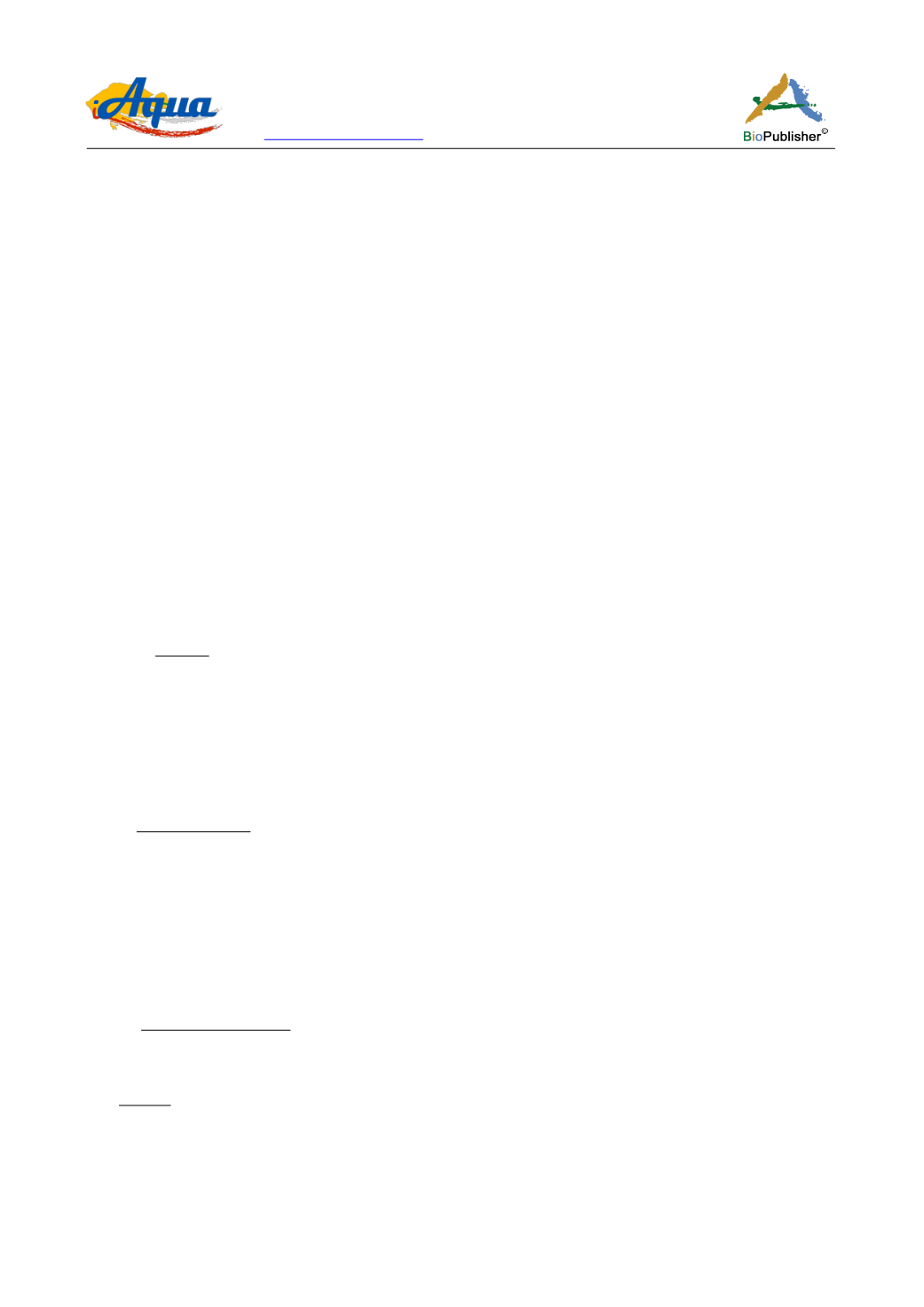
International Journal of Aquaculture, 2017, Vol.7, No.6, 42
-
50
44
Stocking, feeding and sampling of experimental fish
A total of 120 fingerlings of
Clarias gariepinus
of mean weight of (10.94
±
0.01 g) were acclimatized for 21 days
in holding tanks in the departmental laboratory. They were fed with commercial feed bought from Durantee feeds.
After acclimatization, the fingerlings were randomly allocated into the experimental tanks in triplicates, using
completely randomized design.
The fish were starved for 24 hours before the commencement of the feeding trial, and not fed on the weighing day
as recommended (Kumar et al., 2010a). The fish were fed at 5% body weight, twice daily between 8.00 am and
19.00 pm for 12 weeks. The weight of the fingerling in each tank was measured using a Scout Pro Weighting
balance SP x 402 of 400 g maximum loading and 0.01 g resolution (OHAUS Corp. Pine Brook, NJ, USA).The
new weight attained was done through batch weighing to get the weight), while, five fingerlings were taken
randomly from each tank at fortnight to measure the growth rates in terms of total length attained (The fish length
measurement was taken using 1 m fish measuring board of 0.01 cm calibration).The fish were monitored for
mortality daily.
Growth performance, nutrient utilization, production cost and economic evaluation of feeding trials of
Clarias gariepinus
At the end of the culture period the rearing indices such as the growth rates: mean weight gain, specific growth
rate, relative growth rate, and nutrient utilization parameters such as total feed intake, feed conversion ratio,
protein intake, protein efficiency ratio, condition factor, and survival rate were computed and analyzed as reported
by (Adewole and Awosusi, 2015; Adewole, 2015).
The growth was expressed as
Mean Weight Gain
(MWG)
according to (Adewole, 2015)
Where:
W
0 =
initial mean weight
W
1=
final mean weight
n= number of experimental weeks
Specific Growth Rate
(SGR) according to (Adewole and Awosusi, 2015)
Where:
Ln = Natural log
W
0 =
initial mean weight
W
1=
final mean weight
T = time interval
Relative Growth Rate
(RGR) according to (Ajayi et al., 2013)
Condition Factor
(
K
) according to (Ajayi et al., 2013)
Where:
W = final weight
L = Final standard length
T
100
W-
Ln W
SGR
0
1
100
(g) t
body weigh
Initial
(g)
fish
by
gain
Weight
RGR
3
L
100 W
K
n
WW
) MWG (
0
1


